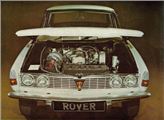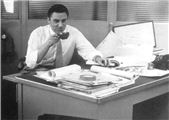Rover P6 is launched today
9 October 1963

£10m INVESTED
For Rover the launching of the new car represents the biggest revolution in plant and production methods in their history. The development programme has occupied five years, during which £10,600,000 has been invested in the new car, a new factory built at Solihull, Warwickshire, and a 456,000sq ft depot for spare parts at Pengam, Glamorgan.
"Into this car we have put all our engineering know-how and skills. We have built 15 prototypes"
- William Martin Hurst
Potential capacity of the factory is 550 cars a week - or one car in just over four minutes. The plant has been in limited operation for 12 months, and secret new models have been out on test all over Britain and the Continent. They have been spotted and photographed by rival manufacturers, and discussed in foreign technical journals.
But with covered nameplates and unpainted bodies, the prototypes have often been taken for some Continental model, usually of Italian origin. Unhappily the man who had the greatest influence in the development and general appearance of the Rover 2000, Maurice Wilks, the company's late chairman, did not live to see the car launched today.
His son, Mr Peter Wilks, was responsible for the overall co-ordination of the project, and the chief stylist was David Bache.
Introducing the Rover 2000 yesterday, William Martin-Hurst, managing director, said: 'Into this car we have put all our engineering know-how and skills. We have built 15 prototypes, which have been driven in the aggregate more than 445,000 miles in this country and abroad. Pre-production cars have been driven over 200,000 miles and 268,000 miles have been covered at high speed on motorways.'
More news from the archive
Compare classic car insurance quotes and buy online. A friendly service offering access to a range of policies and benefits.






